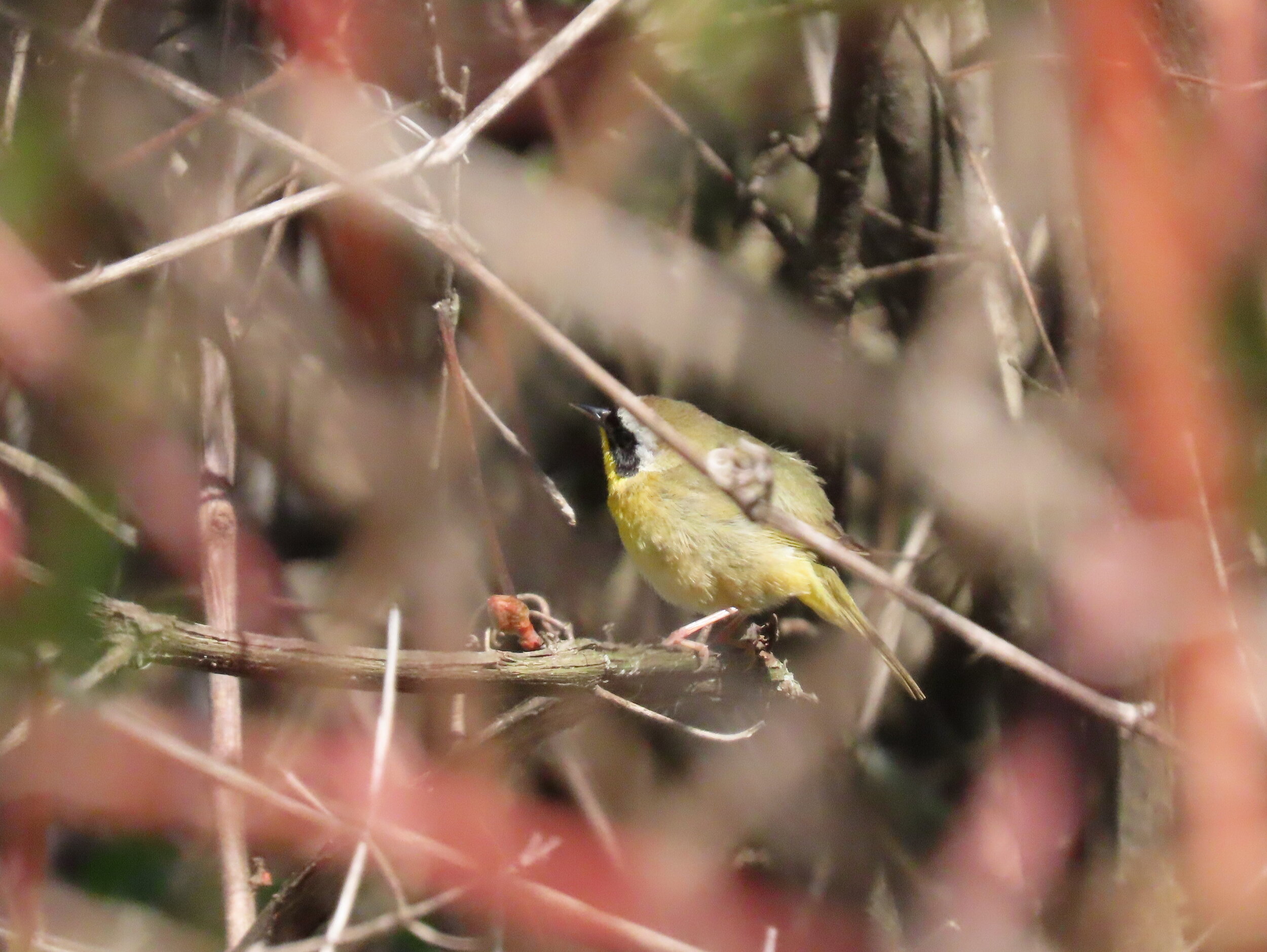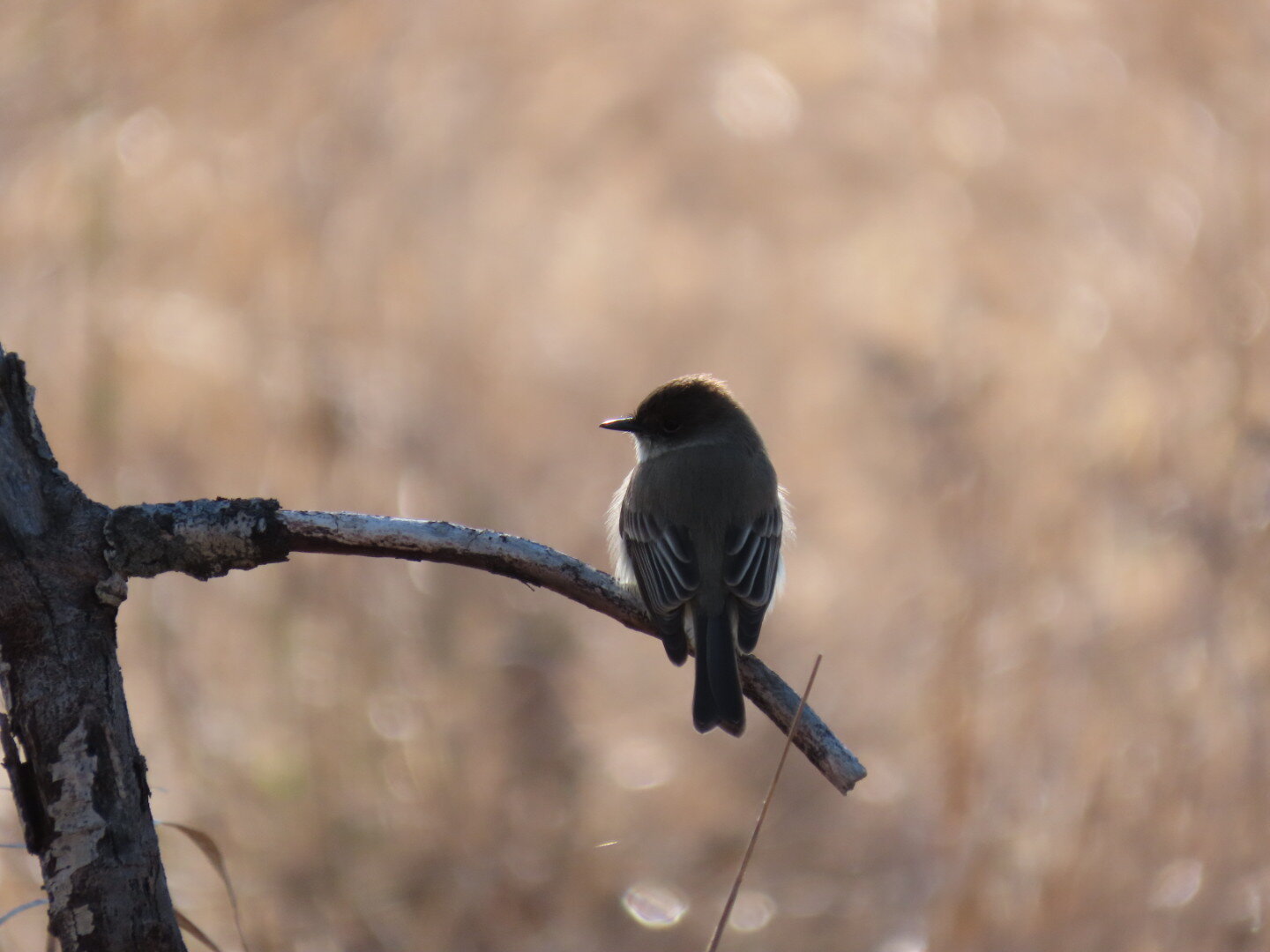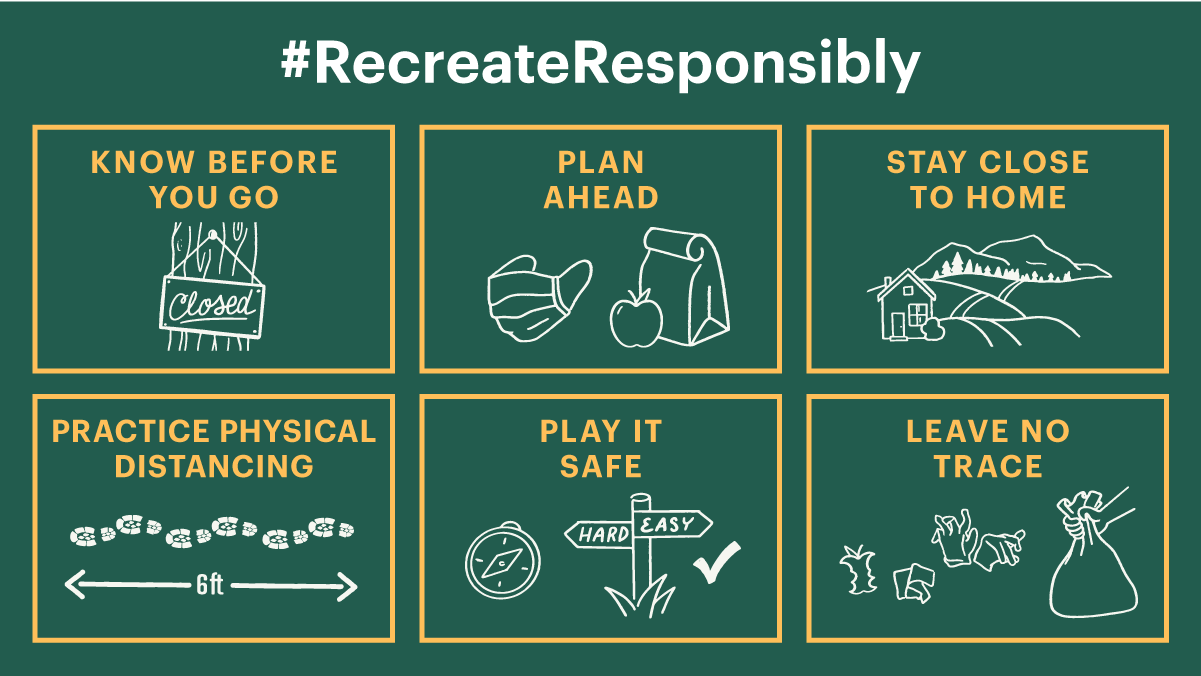Are you missing field trips as much as I am? When you are a new birder like myself, field trips and group bird walks are like gold. You can absorb so much from experienced birders that share tips and advice they’ve accumulated over many years of birding. Nothing quite compares to having someone ID a tricky bird song in the field or point out a field mark that you can recognize right then and there.
I can’t promise you all the joys of a real field trip here on the Entryway to Birding blog, but I’ll do my best! I am not nearly as experienced as Madison Audubon’s many other field trip leaders, but I hope the little bit of direction that I can share will help open your eyes to a few birds that you may not have noticed before.
So where are we off to? Last week, I wrote about my experience birding at Cherokee Marsh for our office’s relay-style participation in the Great Wisconsin Birdathon. This week, I’m heading back to the marsh … and I’m taking you with me!
Pictured is a scene from Cherokee North. What birds do you think we’ll find here? Photo by Caitlyn Schuchhardt
In the video below, I’ve filmed myself sharing brief descriptions of what you might find in different habitats at the north unit of Cherokee Marsh. You can watch it all the way through (it’s about 25 minutes long) or you can follow the links I’ve provided in the write-up below to jump to a certain section of the trail. (If you watch nothing else, be sure to tune in at Stop #11 to watch me get interrupted by a grunting Virginia rail!)
Let’s go birding!
A word of warning: I’m new to the whole “filming-myself-for-the-internet” thing (it’s terribly frightening!) and my camera work is not very good. If you’re someone that doesn’t do well with handheld videos, you may just wanna give this a listen instead. Also, my deepest apologies for my inability to look directly at the camera. I’m trying, I swear!
The Route
Below is a map of the loop that I walked at Cherokee North, with a marker numbering each stop represented in the video. The route, as pictured, is approximately three miles. It takes me about two hours to bird this loop, moving at a slow pace. All of these trails, with the exception of the portion that goes over the hill, are wide and flat. The surfaces are either crushed gravel, grass, or metal boardwalk.
This map shows the route I’m taking through the park. I’ve colored each section of the path to mark the different habitats and areas I talk about in the video. Some sections of trail feature more than one stop. (I just couldn’t help it! There’s so much to talk about!) Don’t feel pressured to do this whole loop if you visit—feel free to pick one or two areas you’d like to focus on!
Stop #1 and Stop #2: The Edge of the Woods
(click each Stop # to jump to that section of the video)
From the parking lot, veer left and take the path that skirts the back edge of the woods. This path gives you a nice, wide vantage point to scan the woods to your right—keep your eyes peeled for any owls that may be hiding up there! On your left, you’ll see the entry road in the distance and some grassland. I find this section of the path to be pretty active; it has some good “edges” where different habitats meet up and many birds tend to like those edges. Along this route, you’ll likely see house wrens pop up to chatter at you, eastern bluebirds flying near the road and field, red-bellied woodpeckers pecking at the dead trees along the right, and gray catbirds hiding in the brush. Listen for the distinctive “drink your teeeeaaaa!” call of the eastern towhee, which I often hear in these woods.
After you pass the warbler trees, you’ll see a nice, quality brush pile. I always stop to see if there’s anything hiding in there! Photo by Caitlyn Schuchhardt
The path will begin to curve to the left and you’ll approach an intersection. Keep going straight to head towards the Yahara River. After the path curves, you’ll see a nice stretch of trees—this is where I usually have good luck spotting some warblers. Be patient as you scan for movement in the treetops. Warblers can be hard to spot because they are so small. You may hear one of the more vocal warblers—the yellow warbler—singing it’s “sweet, sweet, I’m so sweet!” song. Don’t be afraid to just watch for a minute or two and let your eyes adjust to recognizing the movement of birds.
Birds I have seen here recently: house wren, gray catbird, red-bellied woodpecker, downy woodpecker, northern cardinal, American robin, song sparrow, black-capped chickadee, palm warbler, yellow warbler, yellow-rumped warbler, black-and-white warbler, magnolia warbler, blackburnian warbler, chestnut-sided warbler, Nashville warbler
This common yellowthroat was a challenge to spot in the thick of these branches. These little warblers like to hide, so be patient as you’re looking. Photo by Caitlyn Schuchhardt
The path will connect with the main gravel trail that cuts through the woods. You’ll want to take a left when you reach this intersection, then a right when you approach the service drive, in order to head out to the metal boardwalk at the edge of the Yahara River. You’ll notice the habitat will start to get more “marshy” and the trees will thin out. This is where I hear (and sometimes see!) common yellowthroat. Sedge wrens will likely be calling, along with lots of red-winged blackbirds. As you approach the trees down by the water, look out for bluebirds; downy, hairy, and red-bellied woodpeckers; indigo buntings; and song and swamp sparrows.
As you reach the water, scan for potential waterfowl. At this time of year, most of our migrating waterfowl has moved on, but you’re still likely to see Canada geese, mallards, wood ducks, and blue-winged teal. Be sure to scan all the reeds along the far side of the river. I will often spot a distant great blue heron hunting along the edges of the cattails.
With all this open water, you’ll likely see ring-billed gulls and maybe even a Forster’s tern! Forester’s terns will be smaller with a black cap and orange bill. If you see a bunch of small birds swooping over the water, those are likely to be swallows, like tree swallows or barn swallows—they like to swoop low and snatch bugs from the surface of the water. Don’t forget to scan the big open sky above you—red-tailed hawks, turkey vultures, and bald eagles are all birds I’ve seen soaring above the river.
Birds I have seen here recently: wood duck, mallard, blue-winged teal, great blue heron, double-crested cormorant, tree swallow, barn swallow, red-winged blackbird, northern cardinal, blue jay, sedge wren, common yellowthroat, palm warbler, yellow warbler, indigo bunting, bald eagle, red-tailed hawk
Stop #6 and Stop #7: In the Woods
(click each Stop # to jump to that section of the video)
Backtrack until you reach the wide gravel path that runs straight through the woods, and turn left to take this path north. As you walk through the woods, listen for more woodpeckers. Keep your eyes peeled for a bright flash of red—it may not be a cardinal, but a scarlet tanager! Listen for the “cheeeeeeeese-bur-ger” call of the black-capped chickadee and keep scanning the tree tops for signs of tiny movements—warblers may be hopping around up there! If you hear a frog-like call that goes “creeeeeep, creeeeep, creeeep” you might be hearing a great-crested flycatcher.
This is the section of woods where I tend to see owls. As you scan the branches, see if your eyes pick out anything that looks a little “off”—it may be a great horned owl with excellent camouflage. There’s been a few times when a fast-flying small raptor has swooped through these woods while I’m walking along. Smaller than a red-tailed hawk, it’s either been a Cooper’s hawk or a sharp-shinned hawk, but I rarely get a good look. Keep your eyes peeled!
There’s a nice wooden overlook point off to your left as you follow this path. Feel free to take a peek or walk further down to a small dock at the very end of the path. That dock has a nice, low tree and some bushes by the water where I tend to find ruby-crowned kinglets and warblers—especially lots of common yellowthroat!
Birds I have seen here recently: downy woodpecker, hairy woodpecker, red-bellied woodpecker, northern flicker, pileated woodpecker, great crested flycatcher, least flycatcher, northern cardinal, rose-breasted grosbeak, scarlet tanager, gray catbird, house wren, great horned owl
Stop #8: Over the Hill
(click each Stop # to jump to that section of the video)
A downy woodpecker pecks away in a tree at Cherokee North! Photo by Caitlyn Schuchhardt
There will be a path that cuts up the hill and heads east. As you follow this path, you’ll see more of what we saw in the woods below. Keep your eyes peeled for more eastern towhee and woodpeckers, but also potentially a Swainson’s thrush skulking low to the ground or a warbling vireo eating bugs off the tree leaves. My favorite spot on this section of trail is where the path exits the woods at the top of the hill near some benches and treats you to a stunning overlook of the marsh. This open area at the top of the hill is also a prime spot for warblers—it has lots of trees and bushes skirting the open area and it gets lots of sun in the morning to warm up those bugs that warblers like to eat! Spend some time scanning these bushes and the treetops along the edge of the path to see what you can find.
Birds I have seen here recently: downy woodpecker, hairy woodpecker, red-bellied woodpecker, great horned owl, scarlet tanager, blue-headed vireo, warbling vireo, red-eyed vireo, rose-breasted grosbeak, house wren, gray catbird, least flycatcher, tree swallow, yellow warbler, blackburnian warbler, northern parula, magnolia warbler, Wilson’s warbler, Canada warbler, chestnut-sided warbler, bay-breasted warbler
Stop #9: The Pond
(click each Stop # to jump to that section of the video)
This perched eastern phoebe was one of the birds I observed at the pond recently. Photo by Caitlyn Schuchhardt
As you go down the hill, you’ll descend to a low-lying section of the path with a small pond and boardwalk off to your left. Along this part of the path, keep your eyes out for Swainson’s thrush, veery, and American robins—all types of thrushes that really seem to love this section of path. There’s more great habitat here for warblers in the tree tops and in the bushes below. As I walk out onto the wooden boardwalk, I usually see goldfinches, tree swallows nesting in the dead trees nearby, eastern phoebes, least flycatchers, sedge wrens, and swamp sparrows. Don’t forget to look up, too! I often see sandhill cranes fly over or a red-tailed hawk soaring here.
Birds I have seen here recently: sedge wren, American goldfinch, tree swallow, common yellowthroat, eastern phoebe, least flycatcher, eastern bluebird, Swainson’s thrush, veery, American robin, swamp sparrow, song sparrow
Stop #10: The Wide Open Marsh
(click each Stop # to jump to that section of the video)
Look at these buds, chowin’ down together! This indigo bunting and white-crowned sparrow were hanging out, you guessed it, right on the path! Photo by Caitlyn Schuchhardt
After leaving the pond, you’ll walk an expanse of trail that is mostly prairie on your right, with overlooks of the marsh on your left. You’ll likely see a lot of bluebird boxes, though many of them will have been taken over by tree swallows. (Not all of them are, though, so keep an eye out for those bluebirds!) You’ll have a more expansive view of the sky, so don’t forget to look up at what may be flying over. You’ll start to see and hear more sparrows along this path. They can be tough to spot in the tall grass, where they may be hiding, so try scanning the grass path ahead of you—you may see them feeding on the ground! White-crowned sparrow, white-throated sparrow, song sparrow, chipping sparrow, and field sparrow are the most common ones you may see along this stretch.
Birds I have seen here recently: sandhill crane, eastern bluebirds, tree swallow, song sparrow, white-throated sparrow, white-crowned sparrow, chipping sparrow, field sparrow, indigo bunting, rose-breasted grosbeak, northern cardinal, gray catbird
Stop #11 and Stop #12: The Marsh Boardwalk
(click each Stop # to jump to that section of the video)
As you keep walking the trail, you’ll get closer and closer to the marsh on your left. You’ll reach a metal boardwalk that loops out onto the marsh. There’s a nice overlook platform along this boardwalk, which is a great spot to stop and listen for marsh birds. Walk slowly along this section and listen carefully. You’re going to hear lots of red-winged blackbirds calling to remind you this is their territory! You may also see sedge wrens, marsh wrens, and swamp sparrows. But hiding among the reeds are two more secretive marsh birds that you’re more likely to hear than see. These birds are called Virginia rail and sora.
This a photo of the first ever Virginia rail that I saw! It was at Lu’s Pond at Cherokee North early in the morning. I was ecstatic to not only see it, but get a photo! Photo by Caitlyn Schuchhardt
Virginia rail have two distinctive noises you may hear. One is a “kiddik” call that goes “kiddik kiddik kiddik” and gets progressively faster. The other is a strange grunting noise that may not even sound like a bird. (Jump to 22:06 on the video to watch me get interrupted by a grunting Virginia rail—yes, really!) If you’re listening for sora, listen for a long descending whinny that lasts a few seconds or a two-note “ker-wee” call where the second note is higher in pitch.
I took this photo of a sora at a different marsh, but was still thrilled to spot it. I’ve only heard them at Cherokee North—still waiting to get a glimpse! Photo by Caitlyn Schuchhardt
The metal boardwalk you’re on will eventually end and the grass will resume. If you keep walking the loop as it circles back towards the parking lot, you’ll reach Lu’s Pond, where there is a wooden platform overlooking a nice, muddy section of marsh. This is a good spot to get a look at a Wilson’s snipe at dawn or dusk, or to hear (and maybe see, if you’re lucky!) more Virginia rail and sora.
If you follow the path from Lu’s Pond straight to the north, you’ll reach an intersection where you can turn left to head back in the direction of the parking lot.
Birds I have seen here recently: red-winged blackbird, Canada goose, sandhill crane, swamp sparrow, sedge wren, marsh wren, Wilson’s snipe, Virginia rail, sora
Phew! That’s it! That’s the last stop on our virtual field trip through Cherokee North. I hope today’s blog post has given you a starting point if you’re setting out to bird the marsh soon. The write-up I’ve provided here is not an extensive list of all the birds you can find at this park (yes, there are even more birds out there!) but it hopefully highlights a variety of birds you are likely to see in this month of May.
If you choose to explore this walk on your own, be aware that Cherokee North is a popular place and it may be busy. If it’s too busy to maintain social distancing, try another day. Regardless, you should be prepared to #RecreateResponsibly—be aware that restrooms and facilities may be closed, pack essential items like a face mask and hand sanitizer, and practice social distancing while you are out.
That’s all for this week! If you enjoyed this virtual field trip and would like to see one happen again, let me know! I’d love your feedback. Where do you think we should go next?
Happy birding, everyone!
____
Caitlyn is the Communications and Outreach Assistant at Madison Audubon. She’s crazy for birds because they changed her life. She’ll be back next Monday with some tips and tools for birders, new and experienced! Between now and then, she’d love to hear about the birds you’re seeing and hearing. Leave a comment below or email to drop her a line!














